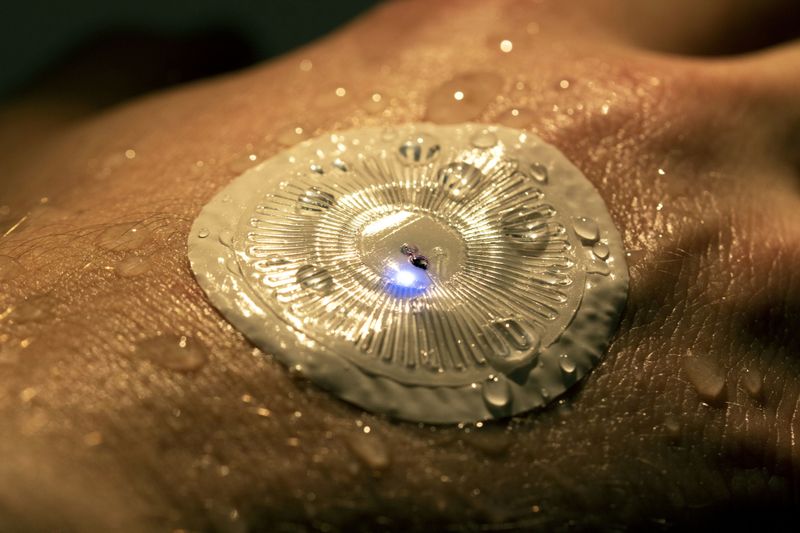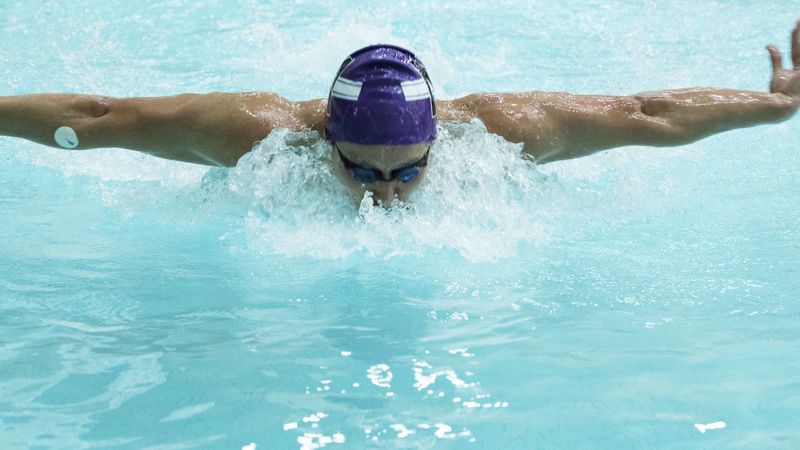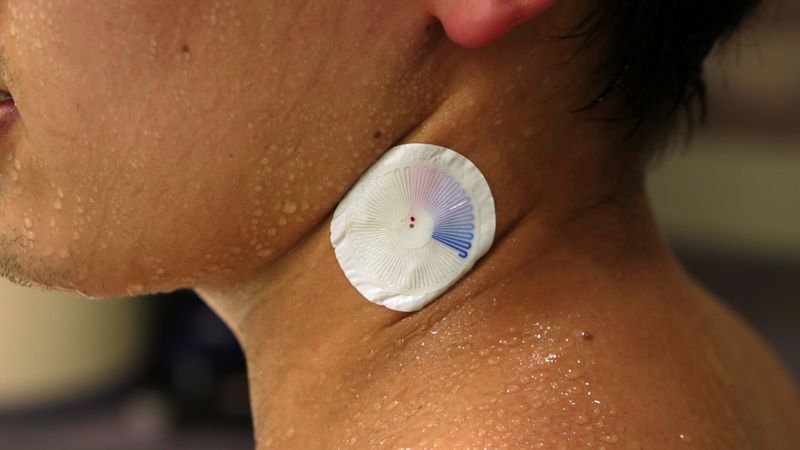
A group of researchers have recently developed a waterproof, bandage-like sweat sensor that tells the wearer when to replenish electrolytes and fluids. This innovative patch collects and analyzes athlete’s perspiration as they exercise in any environment – even swimming.
Described in Science Advances, the patch contains tiny pores on it’s underside that allow the sweat to penetrate the device. Each of these holes contains its own sweat analysis technology, each testing various metrics to analyze if the wearer needs hydration or electrolytes.
Sweat contains various salts, sugars, hormones, and other valuable information, but very little research has gone into using it as a measure for bodily conditions.
“A lot of the chemistry that’s happening in the body shows up in the sweat,” said John Rogers, materials scientist whose team developed the patch at Northwestern University.

READ MORE: Wearable Defibrillators Use Linked with Better Adherence to Medical Therapy
The patch is 1.5 inches in diameter and adheres to the user’s skin wherever placed. The device’s sensors analyze the sweat and portray information that the user’s smartphone reports. The device is also capable of charging wirelessly, making it extremely user-friendly.
A micropore in the center of the patch collects a sample of sweat, which then fills a channel that winds through the devices face. The sweat samples mix and interact with chemicals within these microchannels, causing the fluid to undergo a color change.
“Sweat glands can push sweat through these really tiny channels,” said Rogers.
One can visually observe this process as the serpentine-like channels take on a blue appearance. The length of the channel that becomes blue represents how much sweat the wearer has lost, indicative of decrease in hydration. Another chamber undergoes a similar process but changes from light pink to dark red, displaying electrolyte loss.

READ MORE: World’s First Wearable Peritoneal Dialysis Device Receives FDA Breakthrough Status
“It’s almost like a time-dynamic skin tattoo,” Rogers noted. “It becomes pretty engaging for the individual because you can watch what’s going on with your body chemistry on the device.”
The wearer takes a photo of the patches color report with their smartphone and a corresponding app tells them how much water to consume. Use of this patch allows the athlete to have a real way of knowing how much to drink after exercising, rather than just guessing how much fluid was lost.
Previously, a study of over 2,000 athletes in eight endurance events found that 1% of the athletes consumed so much water that they developed hyponatremia. This condition causes a swelling of cells due to diluted salt levels in the bloodstream, which is indicative of excessive water consumption after competing. Other bodies of work revealed that many other long-distance athletes express this condition without showing any symptoms. At the other end of the spectrum lies extreme dehydration, an even more dangerous condition. With this unique sweat analysis patch, these researchers are providing a convenient means for athletes to avoid these conditions and to also get the right treatment like iv therapy when needed.
The team tested this device on athletes during real competition and reported that the patch maintained function even throughout two hours of swimming. The patch is not yet on the market; however, the researchers are currently working with Epicore Biosystems to commercialize their product.
The device picks up sweat secretions from the person’s skin and channels the fluid into a chemical reagent mixed with food dye that turns the patch different colors—like a pH strip for sweat. https://t.co/OdT1oasJkQ
— WIRED Science (@WIREDScience) January 28, 2019







 © 2025 Mashup Media, LLC, a Formedics Property. All Rights Reserved.
© 2025 Mashup Media, LLC, a Formedics Property. All Rights Reserved.